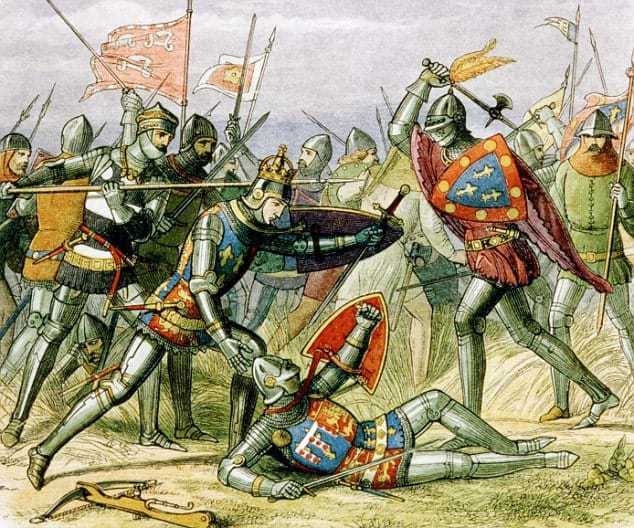During the Middle Ages, fighting was considered the duty of the aristocracy. Noblemen would become knights in the service of their King. In turn, the King had to prove to be the bravest and strongest of them all and lead his troops into battle. Kings were a big target on the battlefield and bringing down a King could often turn the tide of a war. Therefore, there were times that Kings were told to stay away from the fray or plans were made to protect the King such as having decoys. However, Kings continued to stand by their troops in battle up through the 20th century.
King Albert I of Belgium
King Albert I of Belgium was one of the last Kings to take the risk of joining his men in battle. King Albert reigned during the First World War and he took a stand against Germany by refusing to allow them passage through Belgium in order to attack France. The Germans then invaded Belgium which brought Britain into the war as they were guarantors of Belgian neutrality.

When Belgium entered the war, King Albert I took personal command of the Belgian army which as was prescribed by the Belgian constitution. With him, in command, the Belgian troops were able to hold off Germany long enough for Britain and France to prepare for their own clash with the Germans. He was on the front lines leading his men through the Siege of Antwerp and the Battle of Yser. The Battle of Yser drove the Belgian army back to a small strip of territory that was near the North Sea.
King Albert I never stopped fighting with his men and was often inspecting the front lines and coming up with plans to end the war. He even allowed his 14-year-old son to join the army as a private and fight for the freedom of Belgium. It was said that whenever he was on the front lines the Germans refused to fire on him out of respect for him being the highest-ranked commander in harm’s way. There was also the fear of retribution from the Kaiser as King Albert I was his cousin.
During the war, King Albert I tried to secretly negotiate a peace between Germany and the Triple Entente. However, both sides were determined to reach total victory and therefore negotiations never went very far. At the end of the war, King Albert I led the Army Group Flanders and liberated Belgium. Once Belgium was free King Albert, Queen Elisabeth and their family returned to Brussels to a hero’s welcome.

King Sebastian I of Portugal
King Sebastian I of Portugal was born on the feast of Saint Sebastian in 1554, which is why he was given the Saint’s name despite it being very unusual for a European monarch at the time. He was born two weeks after the death of his father and therefore became the heir apparent. His mother left him soon after birth in order to be acting regent of Spain for her father and doing the same for her brother after his abdication. She never returned to Portugal and never saw her son again.
King Sebastian took the throne when he was just 3 and ruled with the help of a regency. He was raised by his grandmother Catherine of Austria who also oversaw his regency until it was taken over by his great-uncle. King Sebastian was credited as being a bright and fearless boy, though he had a tendency to hide from visitors.
He took control of the throne at the age of 14 and did great things for Portugal. He restructured the administrative, judicial and military life throughout Portugal. He created scholarships for students, built hospitals to combat the plague and shelters to care for women and children who were left without husbands or parents due to the plague.
King Sebastian was much loved by his people but he dreamed of a crusade against Morocco. When a succession struggle occurred in Morocco in 1576, Sebastian saw his opportunity. He allied with Abu Abdallah Mohammad II Saadi to fight against Abu Marwan Abd als-Malik I Saadi. King Sebastian led his army despite against the wishes of his advisors and disappeared during the Battle of Alacer Quibir in 1578. He left no heir and Portugal declined following his disappearance. He became known as Sebastian The Desired because the people of Portugal longed for his return.

